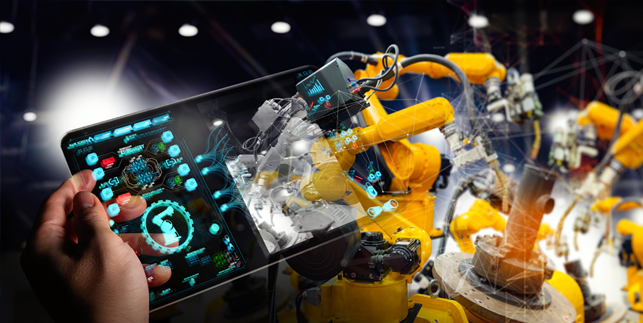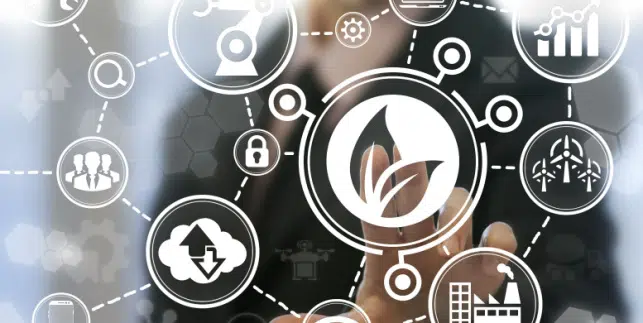The Evolution of Industrialization: Bridging Industry 4.0 and Industry 5.0 for Sustainable Plastic Manufacturing

The transition from Industry 4.0, which revolved around automation and data-centric operations, to Industry 5.0, introduces a paradigm shift in the way manufacturing is viewed. The new evolution of the manufacturing industry emphasizes the synergistic collaboration between humans and machines, bringing their convergence to new levels. This evolution is particularly relevant to sectors demanding high precision and adaptability, such as plastic manufacturing.
Despite Industry 4.0’s significant strides, its full potential has not been universally realized across global manufacturing sectors, with many plants not yet adopting best practices or embracing digitalization in their plants. While Industry 5.0 seems to leave those plants behind, the truth is that industry 5.0 aimts to address the inability of plants to digitlize their operations by incorporating elements of flexibility, human importance, and environmental responsibility. The result many hope for is a strong manufacturing sector where production is optimized, operations enhanced, skilled labors focused on their jobs, and mundane tasks are automated.
Industry 4.0 vs. Industry 5.0: A Paradigm Shift
Industry 4.0 was primarily characterized by the introduction and integration of digitalization solutions to manufacturing shop-floors and automation of manufacturing processes. It heralded an era where machines communicated with each other, making decentralized decisions for more efficient production. Adoption of industry 4.0 best practices remained difficult for many. This was largely due to the gap between the digital needs and human counterparts. Industry 5.0 promises to rectify this and take it a step further.
While 4.0 was about automation, 5.0 is about collaboration. It emphasizes the coexistence of humans and machines, ensuring they work side by side, leveraging each other’s strengths. This human-centric approach prioritizes individual customization and sustainability, preparing industries for a more integrated and holistic future.
Industry 5.0 should not be viewed merely as the next sequential phase to Industry 4.0, where companies must first perfect every tenet of the fourth industrial revolution to progress. Instead, it represents a transformative evolution that simplifies and enhances the digitalization journey. By focusing on human-machine collaboration and intuitive technologies, Industry 5.0 seeks to demystify and streamline the adoption of digital tools, ensuring that innovation is more accessible, adaptable, and beneficial to all stakeholders.
Sustainability 5.0
An area where the fusion of technology, human involvement, and sustainability in the Industry 5.0 framework becomes particularly evident is in the realm of plastic manufacturing. As global awareness of environmental challenges grows, the plastic industry, traditionally seen as a major pollutant, stands at the forefront of sustainable transformations.
Today the plastic industry faces multifaceted challenges, from mounting environmental concerns, intricate waste management dilemmas, to evolving consumer expectations demanding sustainable practices. A human-centric approach, intrinsic to Industry 5.0, is pivotal in addressing these challenges plastic manufacturers face.
By shifting the focus to human insights, empathy, and creativity, the plastic industry can devise sustainable solutions that not only incorporate technological advancements but also resonate with societal values, ensuring a balanced progression that harmoniously aligns profitability with ecological and ethical imperatives.
Central to this transformation is the human element. Workers in the plastic manufacturing sector are increasingly empowered with knowledge and tools to make ecologically conscious decisions throughout the production process. From selecting raw materials to optimizing production processes and managing waste, the human role has evolved from mere execution to active participation in decision-making. This aligns seamlessly with the ethos of Industry 5.0, which advocates for an enhanced human role in symbiosis with technology.
Communication and Transparency as Key Pillars
Industry 5.0’s focus on incorporating the human element into advanced technological frameworks isn’t merely a conceptual ideal; it requires a tangible transformation in the tools and technologies manufacturers utilize. Central to this transformation is the idea of communication and transparency. As manufacturing processes become more complex, the lines of communication must be clearer, more immediate, and more intuitive to facilitate human-machine interaction.
With the landscape of manufacturing undergoing such rapid changes, having technologies that prioritize transparent processes is paramount. Transparency here isn’t just about clarity in operations; it encompasses traceability, accountability, and ensuring that every stakeholder, from the factory floor worker to the top-tier manager, has access to the same information. This shared knowledge ecosystem reduces errors, streamlines operations, and, most crucially, fosters an environment where human workers feel more connected to and in control of the processes they oversee.
This is where Real-time Operational Intelligence (RtOI) solutions like Matics come into play. RtOI systems encapsulate the essence of Industry 5.0 by providing tools that focus on transparent communication, specifically focusing on the unique needs of key stakeholders. By providing real-time insights into production, offering visibility into every stage of the process and ensuring data is delivered within the production context, manufacturing teams receive instant feedback, make informed decisions, and collaborate efficiently with both their human colleagues and automated systems. This in turn enables them to enhance productivity, profitability and efficiency. By promoting open channels of communication, platforms like Matics ensure that the knowledge isn’t just top-down; Workers on the ground can provide feedback, share insights, and actively contribute to process improvements, embodying the human-centric vision of Industry 5.0.
Transition Challenges and Bridging the Digital Divide
Industry 5.0 brings about both opportunities and challenges, with workforce integration standing prominently at the nexus of these changes. Unlike its predecessor, Industry 4.0, which heavily leaned on digital capabilities, Industry 5.0 accentuates the human facet of the manufacturing equation. This emphasis, while pivotal, brings forth the pressing need to bridge existing skill gaps, ensuring that employees can adeptly navigate and leverage the technological landscape.
The imperative of having internal champions becomes clear: individuals or teams dedicated to facilitating this symbiotic relationship between man and machine will define the success or failure of attempts to drive forward digitalization and innovation. Constant training and unwavering support are non-negotiables in this transition. These investments in human capital are what distinguish Industry 5.0.
Instead of merely amplifying digital prowess, it foregrounds the human need, ensuring that technological advancements are tailored to enhance, not overshadow, human potential. For many manufacturers, the leap from Industry 4.0 to 5.0 can seem intimidating, especially when they’re still working on perfecting 4.0 integrations. However, the right digitalization partner can make this transition smoother. Tools that provide seamless integration and persona-based apps ensure that every member of the manufacturing chain, from floor workers to top-level management, has access to contextual, timely information. This drives efficiency, productivity, and a cohesive approach to manufacturing challenges.
The Role of Real-time Operational Intelligence (RtOI)
In the collaborative spirit of Industry 5.0, Real-time Operational Intelligence (RtOI) emerges as a game-changer. Serving as a communication bridge between sensors, machines, and operators, RtOI ensures that data-driven decisions are prompt, accurate, and impactful. For plastic manufacturers, this means quicker responses to market demands and agile adaptations to changing scenarios.
As the dynamic plastic industry continues to change, plastic manufacturers need to be both visionary and pragmatic. Embracing the technologies and philosophies of this new era will not only prepare them for the challenges and opportunities of 2024 but also position them for sustainable, integrated growth in the ensuing decades.





